Development of dairy farms in the last 3 years Europe
There is a unique dataset of dairy farms in Europe that join the farm comparison of UNIFORM-Agri. With these datasets we can look at how the farms change because we can follow an exact group of farms and their data. We totally respect the privacy, so we only show the trend of the group of farms per country. Most of the data is yearly rolling averages and measured in January.
Initially I will start with the farm size and the number of youngstock, but we will also look at the modern sustainability kpi’s. After this we will focus on the development of production levels and fertility and health. There is also an interesting general comparison in the performance between the different countries.
The numbers of farms that have joined this voluntary comparison for 3 years in a row are as follows NL (Netherlands); 1420, Belgium; 299, Germany; 170 and UK; 480. It is exactly this group of farms who provide the data and they all use the UNIFORM Herd management software or a branded version of it which makes this farm comparison so unique.
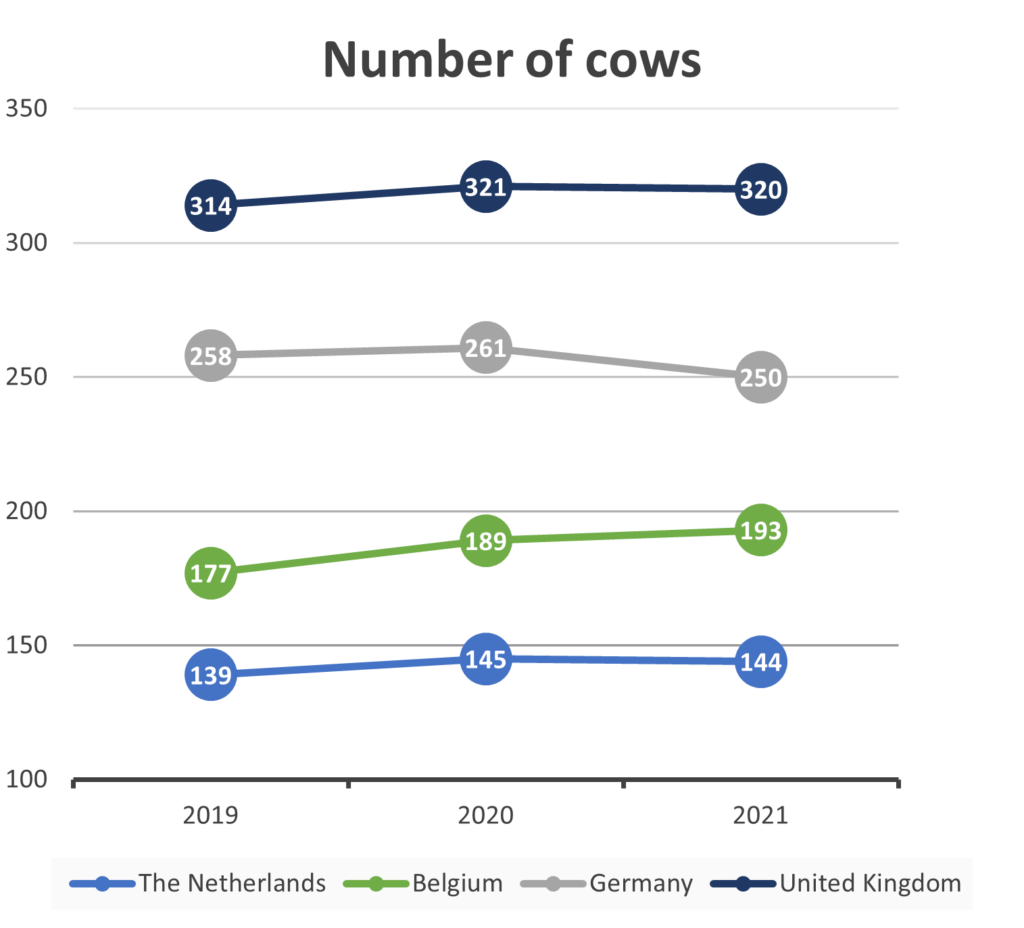
There is a difference in the average herd sizes and these numbers change over the years. This graphic shows the results.
The average UK farm in January 2021 has 320 cows and they are the biggest. The Dutch farms are on average the smallest with only 144 cows. What is surprising is the fact that from the four countries 2 are stable in the last year, and the German farms had less cows, but the Belgium farms grow. The total number of cows in Belgium grew in the last 2 years by 16 cows per herd.
This has to do with the national regulations and although we are in one Europe with a relatively equal milk price level, the political climate per country differs and we can see clearly here the effect.
The number of youngstock per country also differs a lot. In the same group of farms we can see the Netherlands with the lowest number of youngstock and it is even going down. In the UK the average is higher and it is going up.
In January 2020 the rolling average between The Netherlands and Germany was huge. The average Dutch farmer had 5.6 youngstock per 10 cows and the German farmers had gone up to 10.7. That is nearly double. This means a huge difference in replacements rates, or the German Farmers select much later which young heifers will stay on the farm.
Raising youngstock is not cheap and a high replacement rate is in general less economical.
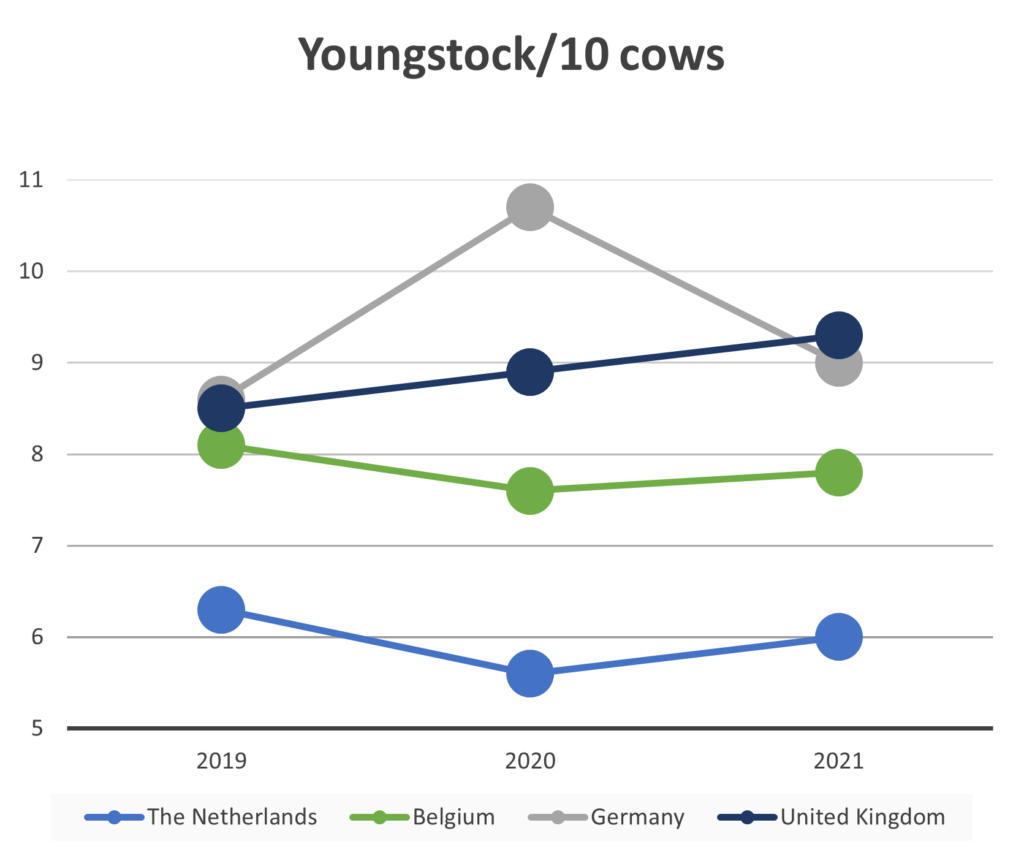
Efficiency and productivity can be measured in many different ways. When we focus on the herd the modern KPI to use for that is Life production efficiency and Production efficiency. These kpi’s measure the total amount of milk an animal has produced and this is divided by the number of days she was on the farm. With Life production efficiency we start counting at birth, and with Production efficiency we start counting the days from the first calving date. The last one can be best used when farmers do not rear their own youngstock.
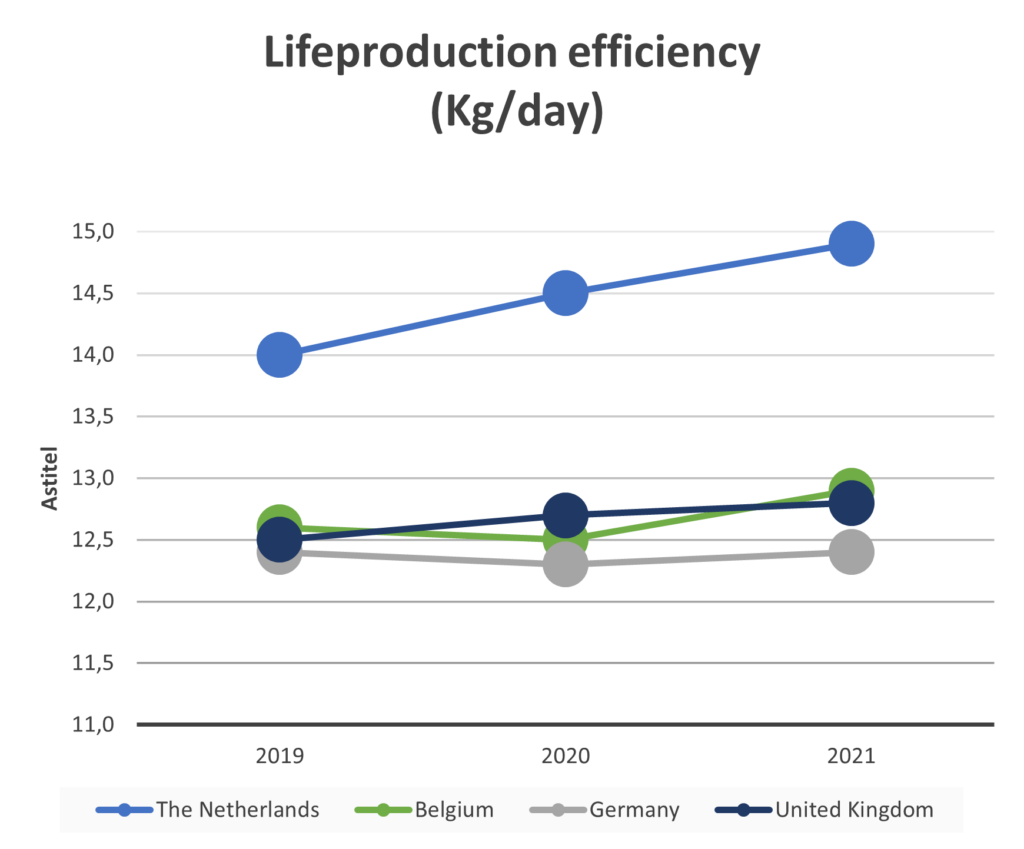
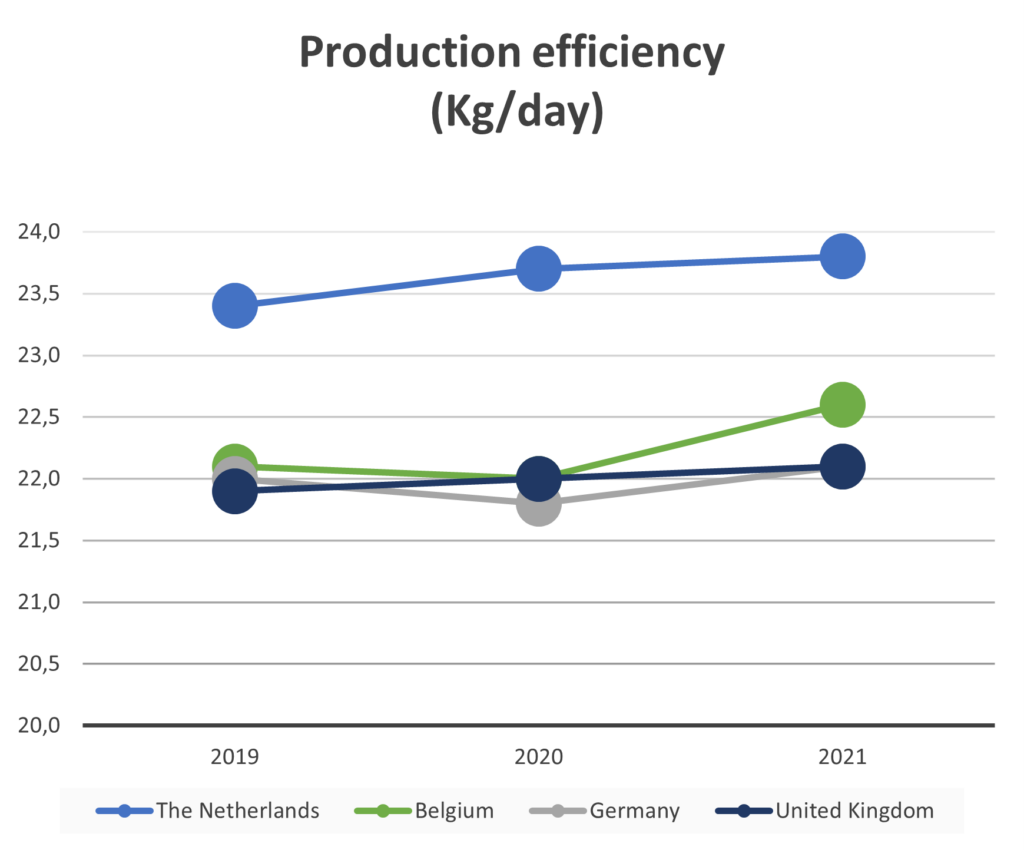
The production efficiency is influenced by many factors. The level of production is important but that does not differ so much between the countries. In a future article I will analyze this in more detail. The differences that we see here is mainly due to the number of days that the animals on the farm are not producing milk. The number of youngstock has an influence (youngstock /10 cows), but also a big factor is the age at first calving and of course the number of days the cows are dry. The differences are huge and we can see that the averages in the Netherlands that are already high are increasing and this growth is something that we don’t see in the other countries.
If we look at the life production efficiency, the Dutch farmers have in January 2019 1,5 kg per day per animal more than the rest, and that goes up to nearly 2 kg in January 2021. This must have an effect on the economics as well as the footprint of CO2, and minerals. The politics and regulations do have their effect.
In the last graph I like to show the life production per cow at departure from the farm. For the majority this is departure to the slaughterhouses.
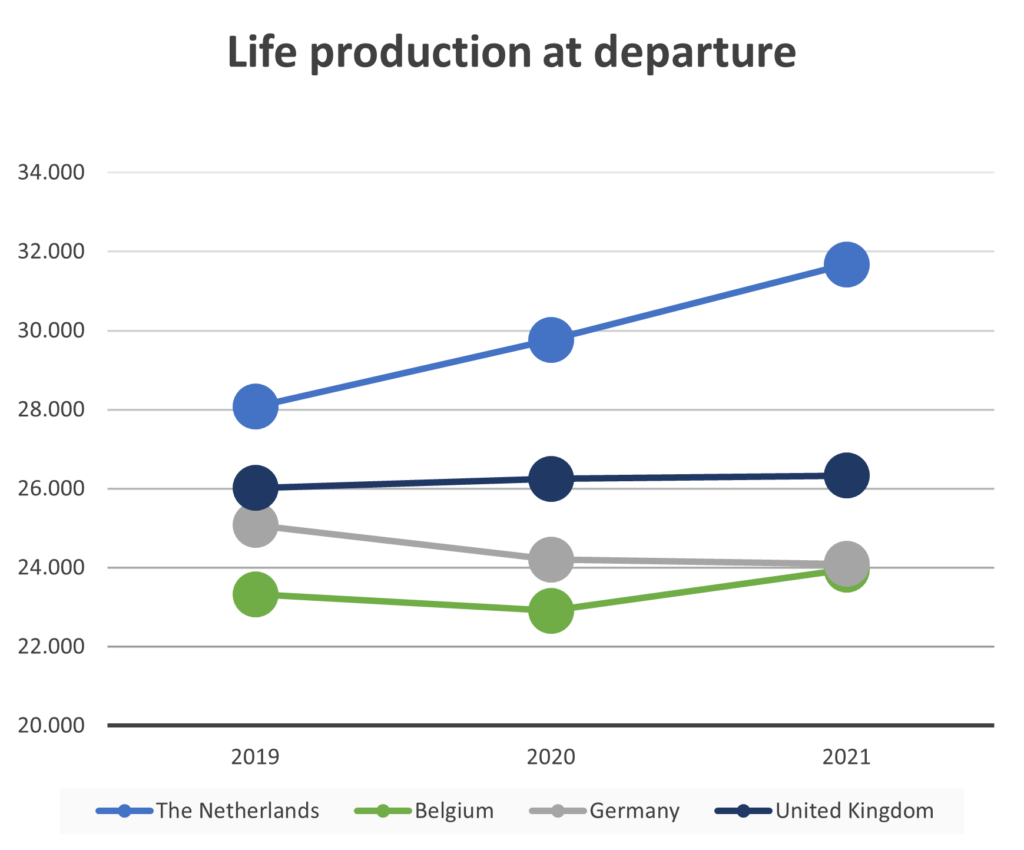
In 2019 the Dutch farmers were leading this indicator, and they have gone up by 4000 kg. That is comparable with nearly 40% of one extra lactation. The UK is stable and slightly increasing. In Belgium, the farmers did also much better in the last year, but the difference is still about 7727 KG more life production per cow leaving the farm. That is more than ¾ lactation. The effect on the economical side is huge and also the effect on the ecological foot print is serious.
I hope that these figures inspire you to look at the farm comparison report in UNIFORM-Agri. Also users in other countries can look at their own data and compare how they do.
Ir. Harm-jan van der Beek
UNIFORM-Agri

